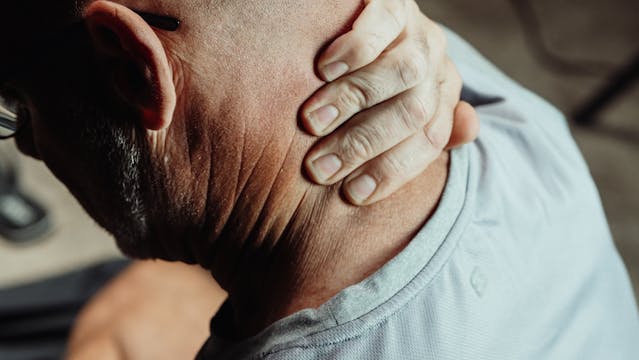Back pain, often dismissed as a simple musculoskeletal complaint, is increasingly being recognised as a complex health issue that extends far beyond the spine. Recent research suggests that chronic back pain may serve as an early warning sign of other severe conditions, including cardiovascular disease, arthritis, diabetes, and even cancer. This emerging evidence challenges the conventional understanding of back pain as merely a localised problem, positioning it instead as a possible indicator of systemic ill health. In particular, the findings highlight that individuals who experience chronic back pain are at a considerably higher risk of developing a range of common and serious diseases than those without it. Such discoveries could reshape how clinicians and policymakers approach prevention and treatment, encouraging a more integrated model of healthcare that recognises the interconnection between pain and broader physiological decline.
The study underpinning these findings was led by Associate Professor Rafael Zambelli Pinto, a physiotherapist and researcher in musculoskeletal health at the University of Technology Sydney (UTS). It was published in the Brazilian Journal of Physical Therapy and conducted in collaboration with an international team from several universities, including the Universidade Federal de Minas Gerais, Universidade Estadual Paulista, and the University of São Paulo in Brazil, as well as the University of Sydney, UNSW, and NeuRA in Australia. The team utilised data from the 2019 National Health Survey in Brazil, encompassing nearly 90,000 participants, making it one of the most comprehensive investigations of its kind in a middle-income country. Approximately one in five respondents reported living with chronic back pain, a proportion strikingly similar to rates observed in higher-income nations, suggesting that this is a truly global public health issue that transcends geography, income, and lifestyle.
The results painted a striking picture of the health burden borne by individuals with chronic back pain. The researchers discovered that conditions such as cardiovascular disease, arthritis, and depression were far more prevalent among those with persistent pain. Diabetes, cancer, asthma, and chronic lung conditions also occurred at higher rates. Statistically, people with back pain were found to be 17 per cent more likely to report cardiovascular disease, 15 per cent more likely to suffer from arthritis, and 12 per cent more likely to experience clinical depression than their pain-free counterparts. This clustering of physical and mental health problems points to a deeper biological and psychosocial connection—one that suggests chronic pain is not an isolated ailment but part of a larger web of interrelated risk factors and bodily dysfunctions.
In Australia, chronic back pain represents a particularly significant burden. The Australian Institute of Health and Welfare estimates that around four million Australians are living with chronic back problems. Nearly three-quarters of these individuals, particularly those aged over forty-five, also suffer from at least one additional chronic health condition. Those who experience both back pain and another illness—particularly arthritis, depression, or cardiovascular disease—report substantially higher levels of disability and activity limitation. Indeed, adults with both back pain and arthritis are more than twice as likely to experience severe restrictions in daily activities compared to those without this combination of conditions. These statistics underscore not only the widespread prevalence of back pain but also the profound effect it has on individuals’ physical capacity, mental wellbeing, and economic productivity.
Dr Zambelli Pinto has emphasised that while further research is needed to clarify the precise nature of the link between chronic back pain and other diseases, there are several plausible explanations rooted in shared lifestyle and behavioural risk factors. “While more research is needed to understand the link between chronic back pain and other non-communicable diseases, they often share underlying risk factors such as physical inactivity, obesity, stress and poor sleep,” he explained. These factors may feed into a self-reinforcing cycle: chronic pain leads to reduced mobility, which contributes to weight gain and cardiovascular strain; stress and poor sleep exacerbate pain sensitivity and inflammation, which in turn hinder recovery. This interdependence highlights how addressing back pain effectively requires more than managing discomfort—it demands confronting the broader determinants of health, such as diet, exercise, mental wellbeing, and rest.
The study concludes with a clear call for healthcare reform. Back pain is one of the most common reasons people visit their GP, yet the research suggests that treatment often remains too narrowly focused on symptom relief. Dr Zambelli Pinto and his colleagues argue for a more holistic, interdisciplinary approach—one that not only alleviates pain but also identifies and manages associated chronic diseases. “It’s not just about the spine,” he said. “These patients are carrying a heavier overall health burden that affects their independence and quality of life.” Comprehensive care pathways that integrate physiotherapy, psychological support, and medical screening for comorbidities could drastically improve both patient outcomes and system efficiency. In essence, back pain should be understood not merely as a mechanical failure of the body, but as a window into the individual’s broader state of health—a visible signal of hidden struggles that, if addressed early and collaboratively, could prevent more serious conditions from taking root.
More information: Rafael Zambelli Pinto et al, Prevalence of non-communicable diseases, multimorbidity, and their impact on activity limitations among adults with chronic back pain: a national population-based study in a middle-income country, Brazilian Journal of Physical Therapy. DOI: 10.1016/j.bjpt.2025.101241
Journal information: Brazilian Journal of Physical Therapy Provided by University of Technology Sydney








